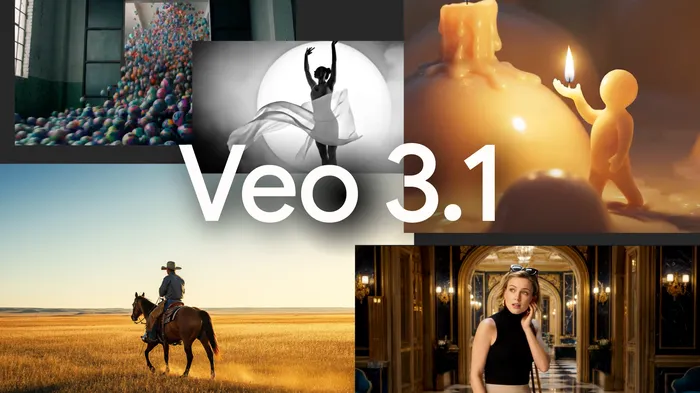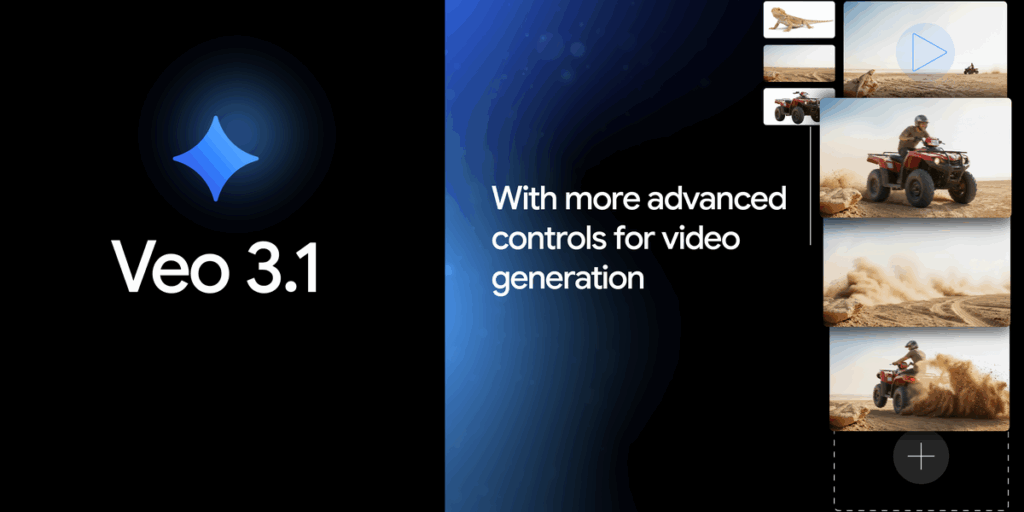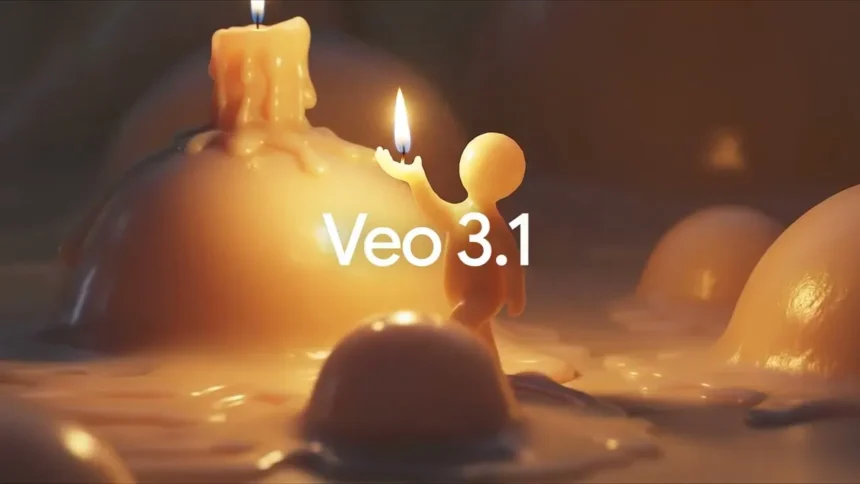Google’s AI Video Tool Gets a Serious Boost
Google dropped Veo 3.1, the newest version of its AI video generation model, and it’s raising the stakes in the fast-evolving world of synthetic media. The upgrade delivers sharper visuals, improved sound, and smarter prompts — all designed to compete directly with OpenAI and its powerful Sora 2 video engine.
Veo now integrates across Google’s creative suite, including Flow, the company’s video production platform. The update also introduces a “Fast” mode, enabling quicker video generation without overloading GPUs. The mix of speed, realism, and scalability gives Google’s ecosystem an edge in what’s becoming the new AI content arms race.
What’s Happening & Why This Matters
From Veo 3 to 3.1 — A Leap in Realism
The release of Veo 3.1 is another jump for Google’s text-to-video technology. Only a few months after the debut of Veo 3, the company refines how its AI understands and executes creative prompts. This new version prioritizes stronger prompt adherence, meaning users get exactly what they ask for — with fewer wasted compute cycles.

According to Google engineers, Veo now “understands cinematic intent.” Whether generating scenes from natural language or structured screenplays, the model captures motion, depth, and tone more accurately than before.
The audio engine, a defining feature introduced in version 3, now sounds even more natural. Dialogue syncs seamlessly with character motion, and ambient sounds match the on-screen environment. These optimizations spell the difference between something that looks AI-generated and something that feels cinematic.
Higher Fidelity, New Formats
Veo 3.1 also addresses one of the most common creative limitations of AI-generated video — resolution and format flexibility. While earlier versions were capped at 720p landscape, the new model produces both landscape and portrait 16:9 video in higher resolutions.
3.1 aligns with how people consume content today. With vertical video dominating platforms(e.g.,TikTok and YouTube Shorts), Veo now fits directly into the social-first creator pipeline. Google’s decision to support both orientations instantly makes the tool relevant for influencers, marketers, and professional studios alike.
As one Google engineer explained in a recent developer forum:
“The internet is vertical now. We’re training Veo to see and think vertically too.”
Flow Integration and Creative Speed
The integration of Veo 3.1 within Flow, Google’s AI filmmaking tool, expands how creators generate full scenes. Flow acts as a director’s interface for Veo — allowing users to storyboard, refine, and assemble full productions using only text commands and reference clips.

The new ‘Fast’ mode drastically shortens rendering time for short clips, a key update for creators who prioritize speed over frame-perfect accuracy. This makes Veo more accessible to social content producers and journalists who need instant turnaround.
Within the wider Google ecosystem, Veo now connects directly to Drive, YouTube, and Vertex AI, positioning it as a central node in the company’s creative and enterprise offerings.
The Race with OpenAI’s Sora 2
Google’s Veo 3.1 release lands just as OpenAI’s Sora 2 dominates headlines with its lifelike motion and realism. Both systems share one goal — to make synthetic video indistinguishable from real footage.

The timing suggests a competitive escalation. Google wants Veo integrated across YouTube before Sora’s expansion onto the iPhone app store gains too much ground. YouTube remains the largest video dataset on the planet, and its content serves as prime fuel for Google’s AI training efforts.
Veo’s inclusion in YouTube Shorts is widely expected next, unlocking an enormous audience for generative video content. If that happens, the world’s largest video-sharing site doubles as the world’s largest AI video creation hub.
The Implications for Creative Media
The question now isn’t if AI-generated video becomes mainstream — it’s how fast. Veo’s integration with familiar Google tools simplifies what used to be a complex, technical process. Anyone with access to a Google account can soon create professional-grade visuals in minutes.
The democratization of video production creates interesting, new challenges for media verification and intellectual property law. As AI-generated content spreads across social platforms, audiences struggle to distinguish between real and synthetic footage.
Industry watchers already describe the current state as “the Sora-Veo era,” where generative video tools evolve as quickly as their users demand.
TF Summary: What’s Next
Veo 3.1 signals Google’s intent to go head-to-head with OpenAI’s Sora 2. The update combines speed, control, and versatility into one seamless workflow; it’s only the beginning. Expect Google is pushing Veo accessibility to YouTube creators, integrating real-time text editing, and enabling multi-character scene generation — all by the close of 2025.
MY FORECAST: Veo 3.1 developing into more than an AI video tool. It’s a statement from Google that it intends to own the next phase of visual storytelling. The line between filmmaker and model prompt engineer is much, much thinner — and more powerful.
— Text-to-Speech (TTS) provided by gspeech


